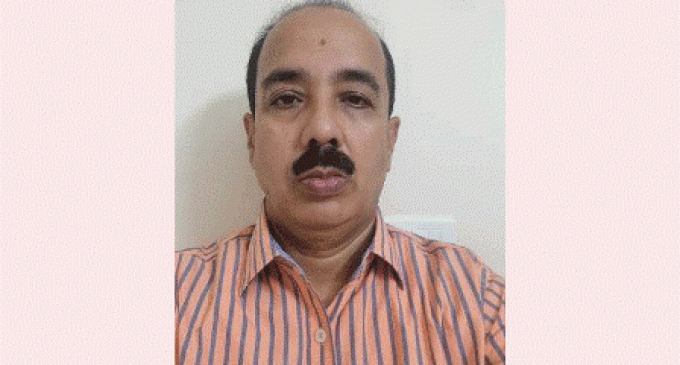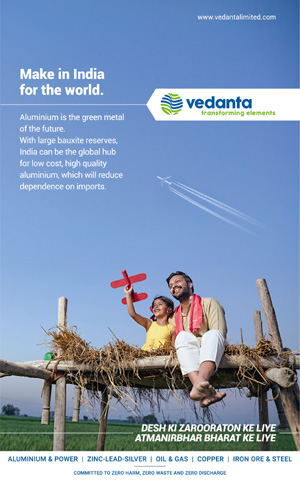Water is life

By Er Arun Patanaik
Jajpur, Sept 12 :Water is life. It is the most precious, essential and important resource that makes life possible. Water is useful for us in multiple ways in our daily life.Water is one of the most important substances for life on earth to function.
It is equally important for humans as well as animals. Water does not merely help us survive, but it is significant for our day to day functioning. It has numerous uses when we come to think about it. Majority of our earth is covered with water itself, but, not all of it is safe for consumption. Therefore, it makes it essential for us to utilize this transparent substance chemical wisely.
Moreover, if we look at the shortage of water happening in our country, it makes it all the more important to conserve it immediately. As we have already said that water has numerous uses, we will see where it is used. This part will most importantly help us realize the importance of water. It will make humans aware of what absence of water in the following areas can do to human life.
As India’s main occupation is agriculture, water is exhaustively used here. Irrigation and cattle rearing requires a lot of water. Thus, a lot of farmers’ livelihood depends on it.Water is one of the most important substances for life on earth to function. It is equally important for humans as well as animals. Water does not merely help us survive, but it is significant for our day to day functioning.
It has numerous uses when we come to think about it. Majority of our earth is covered with water itself, but, not all of it is safe for consumption. Therefore, it makes it essential for us to utilize this transparent substance chemical wisely. Moreover, if we look at the shortage of water happening in our country, it makes it all the more important to conserve it immediately.
As we have already said that water has numerous uses, we will see where it is used. This part will most importantly help us realize the importance of water. It will make humans aware of what absence of water in the following areas can do to human life. As India’s main occupation is agriculture, water is exhaustively used here. Irrigation and cattle rearing requires a lot of water. Thus, a lot of farmers’ livelihood depends on it. Further, industries use water for various purposes. It comes in handy when cooling, manufacturing and transporting several goods.
For instance, thermal power plants consume quite a substantial amount of water for their running. Furthermore, the domestic use of water cannot be left behind. In the day to day life of the common man, water plays a vital role. That is to say, from drinking water to washing utensils, we need water every step of the way.
After that, plants need water to survive and make food. It is one of the main elements which help them grow. Hence, water is extremely important for humans, animals, and plants to survive.
While water is quite essential and yet so scarce, however, people fail to realize this fact. They waste water with little or no care for the results of this activity.
There are various ways in which one can avoid wasting water. To begin with, all households must get their leaking taps checked. They should fix them immediately as every drop is precious. Similarly, we must choose buckets instead of showers for bathing. This is a very debatable topic and it needs to be settled. Showers waste a lot of water, so people must prefer buckets.
This particular habit is quite commonly found in most of the households. People do not turn off their taps while brushing their teeth and washing utensils. Always remember to keep the tap off when doing so. Water is essential for the healthy growth of crops and agricultural resources and uses to produce many products.
The most important thing is that the water that people drink and use for other hygienic purposes requires a pure and clean. It indicates that the water must be free from germs and chemicals and be cleaning not turbid. Germs that cause disease and chemicals contaminate the water. and while people drink it or come in contact with it differently, it causes sickness and diseases.
It says that water is not safe to drink if it is not potable. Throughout history, there have been many deaths people because pathogenic germs have spread in the community through contaminated water. One of the reasons why it happens nowadays is that people in many countries take care of the availability of pure drinking water. Water supplies are routinely testing for germs and chemicals that may contaminate water.
Groundwater refers to any source of water under the soil layer or between rocks and other materials. Most communities receive water from underground aquifers or rock formations capable of storing large amounts of freshwater.
Only 4 percent of the water on Earth is considering freshwater, and we find only 30 percent of this small amount as groundwater. Pollution abuse threatens this valuable resource. Surface water sources include any above-ground water harvest, such as rivers, lakes, ponds, and oceans. Underground aquifers also feed some sources of surface water.
Surface water accounts for around 75 percent of the water. This is water that falls to the ground as rain or hail. While collects this water from a particular area called the catchment, it then stores the water in a natural or artificial (artificial) barrier called a dam or reservoir. The catchment areas are usually distant from the cities to reduce the likelihood of water contamination.
Some laws control human activities, such as agriculture and recreation in catchment areas and dams, to ensure that it keeps water resources in a potable state. Although oceanic water accounts for almost 90 percent of all water on Earth, it is not a viable source of drinking water unless removing salt and other contaminants.
Desalination, the process of salt removal from water, is rapidly growing in practice. For removal of salt and other microscopic particles from water, reverse osmosis is the most promising method. This process forces salty water through filters with microscopic pores that remove salt and other microbes. Reverse osmosis requires large amounts of energy, which makes it a very costly process.
With 03 percent of terrestrial water considered freshwater, 70 percent of this small amount is now enclosed in glaciers and ice caps. Theoretically, Glacier can be melted and used, but the amount of energy needed to melt and transport vast amounts of ice makes it economically impractical.
Glaciers and ice caps also play a significant role in regulating the Earth’s climate and global temperatures, so that their role is significant. Recycling of water consumes the dirty water such as sewage and uses it again, instead of directing it to the nearest river or ocean, where it can spread pollution and disrupt water life.
We can conclude that all living organisms on Earth depend entirely on water, and if the water they consume is not clean, it harms these organisms. Water refinery systems partially solve the problem of people outside such a barrier.
However, people in non-developed countries do not have such refining systems. They consume water directly from their natural sources, just like animals and plants. That is why all-natural water sources must be clean so that all living organisms on the planet have access to clean water.






